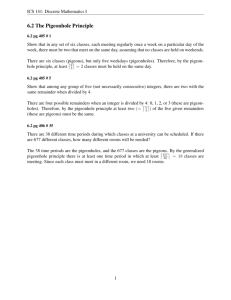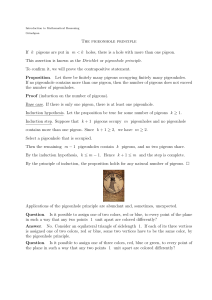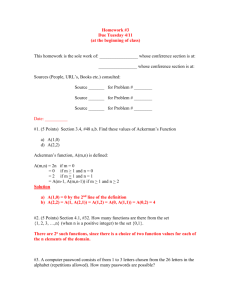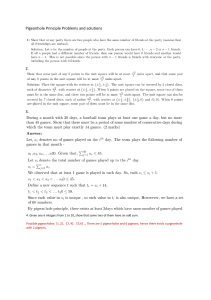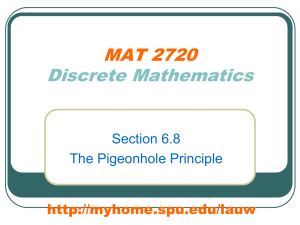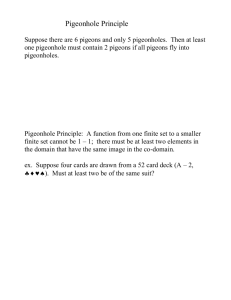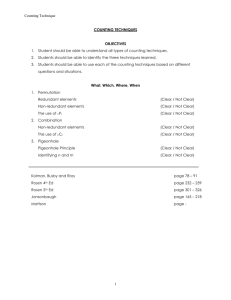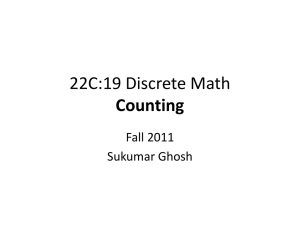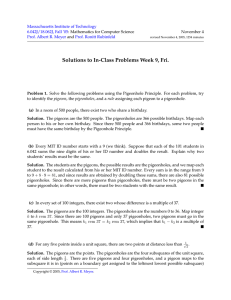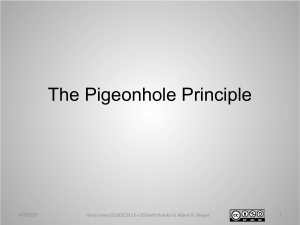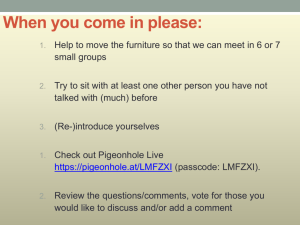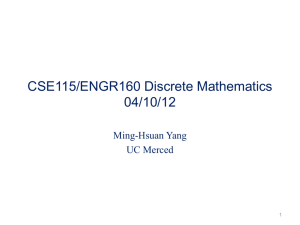MATH NEWS R dt USNA
advertisement
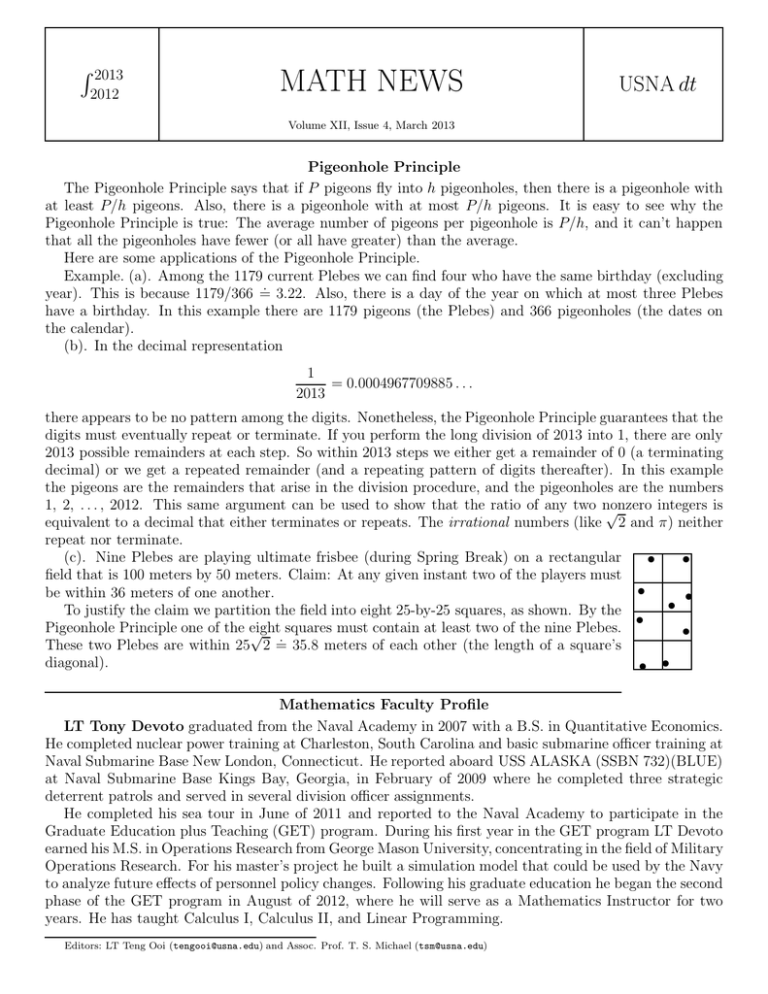
R 2013 2012 MATH NEWS USNA dt Volume XII, Issue 4, March 2013 Pigeonhole Principle The Pigeonhole Principle says that if P pigeons fly into h pigeonholes, then there is a pigeonhole with at least P/h pigeons. Also, there is a pigeonhole with at most P/h pigeons. It is easy to see why the Pigeonhole Principle is true: The average number of pigeons per pigeonhole is P/h, and it can’t happen that all the pigeonholes have fewer (or all have greater) than the average. Here are some applications of the Pigeonhole Principle. Example. (a). Among the 1179 current Plebes we can find four who have the same birthday (excluding . year). This is because 1179/366 = 3.22. Also, there is a day of the year on which at most three Plebes have a birthday. In this example there are 1179 pigeons (the Plebes) and 366 pigeonholes (the dates on the calendar). (b). In the decimal representation 1 = 0.0004967709885 . . . 2013 there appears to be no pattern among the digits. Nonetheless, the Pigeonhole Principle guarantees that the digits must eventually repeat or terminate. If you perform the long division of 2013 into 1, there are only 2013 possible remainders at each step. So within 2013 steps we either get a remainder of 0 (a terminating decimal) or we get a repeated remainder (and a repeating pattern of digits thereafter). In this example the pigeons are the remainders that arise in the division procedure, and the pigeonholes are the numbers 1, 2, . . . , 2012. This same argument can be used to show that the ratio of any two nonzero integers is √ equivalent to a decimal that either terminates or repeats. The irrational numbers (like 2 and π) neither repeat nor terminate. t t (c). Nine Plebes are playing ultimate frisbee (during Spring Break) on a rectangular field that is 100 meters by 50 meters. Claim: At any given instant two of the players must t t be within 36 meters of one another. t To justify the claim we partition the field into eight 25-by-25 squares, as shown. By the t t Pigeonhole Principle one of the eight √ . squares must contain at least two of the nine Plebes. These two Plebes are within 25 2 = 35.8 meters of each other (the length of a square’s t t diagonal). Mathematics Faculty Profile LT Tony Devoto graduated from the Naval Academy in 2007 with a B.S. in Quantitative Economics. He completed nuclear power training at Charleston, South Carolina and basic submarine officer training at Naval Submarine Base New London, Connecticut. He reported aboard USS ALASKA (SSBN 732)(BLUE) at Naval Submarine Base Kings Bay, Georgia, in February of 2009 where he completed three strategic deterrent patrols and served in several division officer assignments. He completed his sea tour in June of 2011 and reported to the Naval Academy to participate in the Graduate Education plus Teaching (GET) program. During his first year in the GET program LT Devoto earned his M.S. in Operations Research from George Mason University, concentrating in the field of Military Operations Research. For his master’s project he built a simulation model that could be used by the Navy to analyze future effects of personnel policy changes. Following his graduate education he began the second phase of the GET program in August of 2012, where he will serve as a Mathematics Instructor for two years. He has taught Calculus I, Calculus II, and Linear Programming. Editors: LT Teng Ooi (tengooi@usna.edu) and Assoc. Prof. T. S. Michael (tsm@usna.edu)
